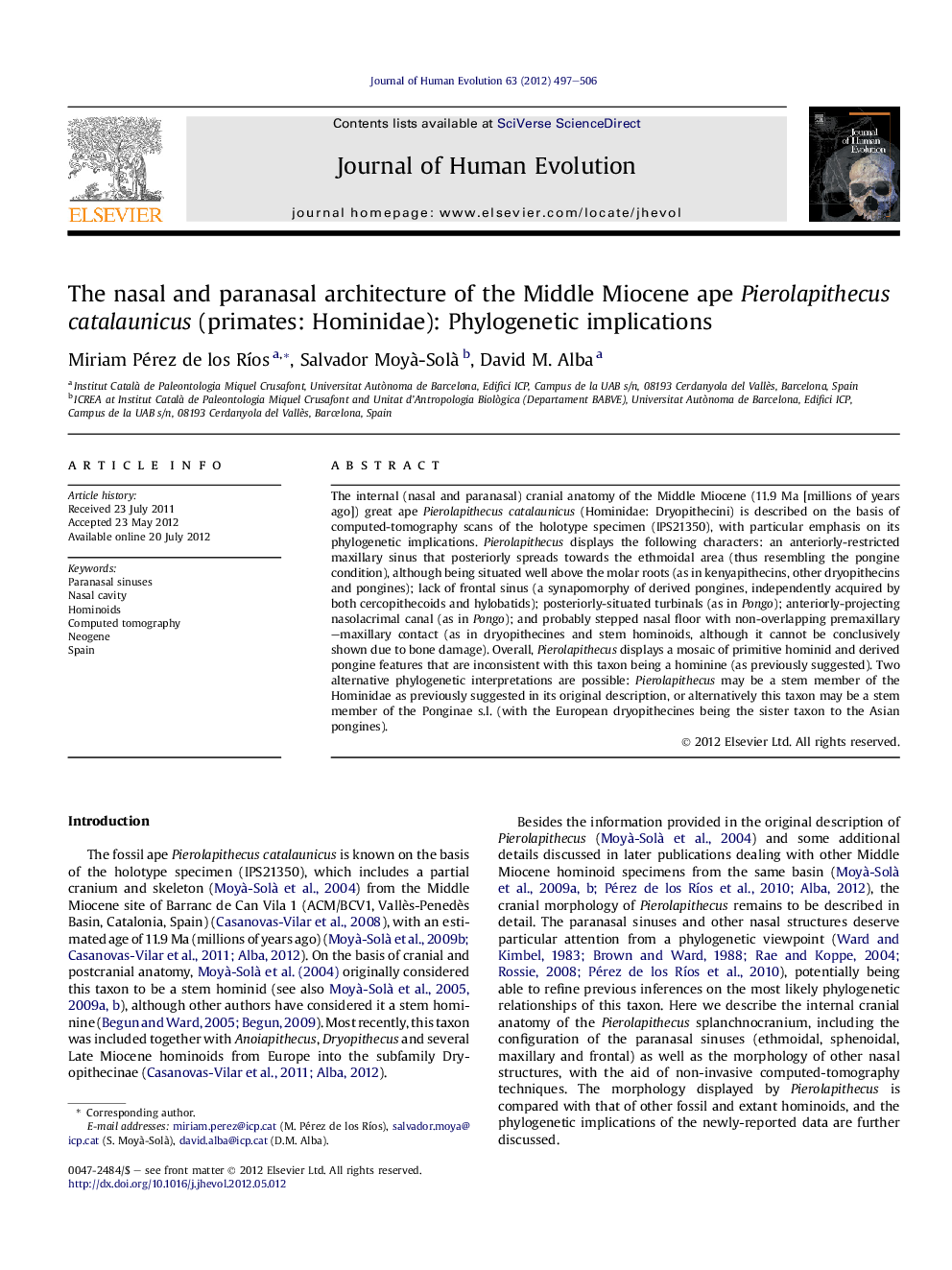| Article ID | Journal | Published Year | Pages | File Type |
|---|---|---|---|---|
| 4556362 | Journal of Human Evolution | 2012 | 10 Pages |
The internal (nasal and paranasal) cranial anatomy of the Middle Miocene (11.9 Ma [millions of years ago]) great ape Pierolapithecus catalaunicus (Hominidae: Dryopithecini) is described on the basis of computed-tomography scans of the holotype specimen (IPS21350), with particular emphasis on its phylogenetic implications. Pierolapithecus displays the following characters: an anteriorly-restricted maxillary sinus that posteriorly spreads towards the ethmoidal area (thus resembling the pongine condition), although being situated well above the molar roots (as in kenyapithecins, other dryopithecins and pongines); lack of frontal sinus (a synapomorphy of derived pongines, independently acquired by both cercopithecoids and hylobatids); posteriorly-situated turbinals (as in Pongo); anteriorly-projecting nasolacrimal canal (as in Pongo); and probably stepped nasal floor with non-overlapping premaxillary–maxillary contact (as in dryopithecines and stem hominoids, although it cannot be conclusively shown due to bone damage). Overall, Pierolapithecus displays a mosaic of primitive hominid and derived pongine features that are inconsistent with this taxon being a hominine (as previously suggested). Two alternative phylogenetic interpretations are possible: Pierolapithecus may be a stem member of the Hominidae as previously suggested in its original description, or alternatively this taxon may be a stem member of the Ponginae s.l. (with the European dryopithecines being the sister taxon to the Asian pongines).
